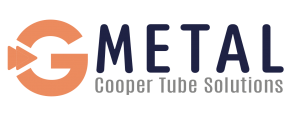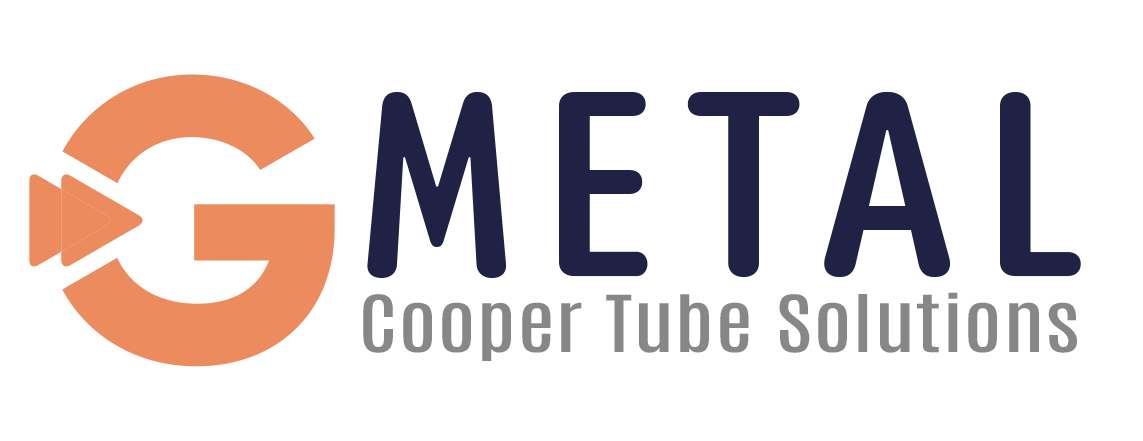Treatment of Substance Use Disorders Overdose Prevention
There is currently no cure for SPS, only treatments to subdue the symptoms — but these don’t always help. “Rebound” is also a frequent discussion around the drug − testing positive for COVID-19 or experiencing symptoms again two to eight days after recovery, though it also occurs in people with COVID-19 who don’t take the drug. The Department of Health and Human Services and Pfizer rolled out patient assistance programs to provide Paxlovid for free through Medicare and Medicaid until at least the end of 2024. Before this, in December 2021, it was approved for emergency treatment of adults and pediatric patients over 12 years of age via emergency use authorization.
Principles of drug uptake and distribution
Zhao said he and Koya wanted to study how the stroma affects the T-cell infiltration into the tumor and then produce therapies to dissolve or disrupt the stroma. The research also provided a close look at how these drugs temporarily enhance the brain’s ability to adapt and change, an ability known as plasticity. Faissner performed a lumbar puncture test, revealing that the patient’s cerebrospinal fluid, which circulates through the spinal cord and the brain, was packed with antibodies against a protein called glutamic acid decarboxylase (GAD). GAD is needed to make GABA, a chemical messenger that helps tamp down neuron activity. Without it, the brain fires off signals at an excessive rate, leading to the muscle cramps and stiffness seen in SPS. Those most severely affected by SPS develop progressively worse muscle stiffness, eventually leaving them bedbound, while chest spasms can sometimes hinder their breathing.
Basic principles of SUD treatment
Since RCTs are essentially comparisons of groups of people given different treatments, they predict only the average effect to be expected. This means that in some people the effect will be greater and in others less. Awareness of this will help patients understand that the outcome that they experience may not be the same as the average expectation. If the individual turns out to be much more or much less sensitive to the drug than average, the guideline may not apply. After discussion with you, your health care provider may recommend medicine as part of your treatment for opioid addiction. Medicines don’t cure your opioid addiction, but they can help in your recovery.
Flyer: Targeted Therapy for Cancer
For example, 40.7 million people ages 12 or older with a substance use disorder in 2021 hadn’t received treatment at a specialty facility, and 96.8 of them felt they didn’t need this type of treatment. Treatment for SUD generally happens either in an inpatient or outpatient setting. It involves a form of talk or behavioral therapy and sometimes medication. Once a person has completed medically managed intensive inpatient treatment, sometimes known gallbladder and alcohol consumption as detoxification, or “detox,” it’s often very helpful to temporarily relocate to a monitored sober community within the first year. Psychosocial treatments target aspects of a person’s social and cultural environment, as well as any psychological and behavioral patterns that may cause difficulties in their life. Knowing these details has led to the development of drugs that can “target” these proteins or enzymes and block the messages being sent.
For example, some cancers have certain types of proteins or enzymes send certain messages to tell the cancer cell to grow and copy itself. This psychologist has found that some girls and women suffer deeply when their brothers struggle with substance use disorder. • Therapy enables each individual to identify the situations that serve as triggers to drug use and to develop their own workable ways to manage them. Although print and broadcast media also have an important role, frothy news appeal and editorial values can sometimes work against real understanding.
- While relapse is a normal part of recovery, for some drugs, it can be very dangerous—even deadly.
- Because addiction can affect so many aspects of a person’s life, treatment should address the needs of the whole person to be successful.
- Children are not small adults, and drug dosages may be quite different than they are for adults.
Addiction is a treatable disease
Sober living houses typically require residents to be engaged in academic or work activity for most of the day and, often, some type of therapy. Residential care may be of most value to those with an unstable or unhealthy home environment. Patients can be readily observed and monitored, an advantage for the early stages of medication management, if used.
Specific groups for targeting could include young mothers and carers of chronically ill people. For retired people, one could envisage special programmes, perhaps in collaboration with the University of the Third Age. Conversations between patients and professionals would then become more effective and help shared decision making. Programs across the country are underway to offer naloxone and medications for opioid use disorder in jails and prisons, paired with instruction, training, and social support. Federal agencies have launched programs to help people manage withdrawal in jails and provide financial health care support for people who are about to reenter the community.
Besides treatment for cancer, chemotherapy may be used to prepare people with bone marrow diseases for a bone marrow stem cell treatment, and it may be used for immune system disorders. Chemotherapy is an aggressive form of chemical drug therapy meant to destroy rapidly growing cells in the body. It’s usually used to treat cancer, as cancer cells grow and divide faster than other cells. It’s important to note that some targeted therapy drugs, for example, monoclonal antibodies, work in more than one way to control cancer cells and may also be considered immunotherapy because they boost the immune system. Recovery from addiction isn’t just a process of undergoing treatment.
For that reason and others—AA has popularized the disease model of addiction and requires complete abstinence—it is increasingly controversial. Twelve-step programs do not appeal to everyone, but many find them helpful. In addition to residential treatment pregabalin abuse in combination with other drugs and partial hospitalization, there are many treatment possibilities for addiction. It is difficult to know what type of addiction services a person needs—or will work best—and how to begin to navigate the often-confusing world of addiction treatment.
Leading causes of death worldwide include cardiovascular disease, cancer, cerebrovascular disease, accidental injuries, and chronic lung disease. A major preventable cause of death is cigarette smoking, which is linked to increased risk of cardiovascular disease (e.g., heart attack), cancer, stroke, and chronic lung diseases such as emphysema and chronic bronchitis. Since 2019, the National Institutes of Health has funded partnerships across the country to figure out how to link people with addiction to care during and after their time in the corrections system. These researchers are poised to share new evidence as it emerges that will help other communities make data-driven changes so they can implement what is most efficient in justice settings. Neglecting to provide access to these lifesaving treatments and harm-reduction measures creates deadly gaps for people when they leave jail or prison.
Others may “graduate” to it after more intensive treatment is completed. It depends on the substance or substances you are using and how long you’ve been using them. One study of treatment facilities found that almost 80% of people undergoing therapy for cessation received medications. They can help rewire the brain in a variety of ways to put the person back in the driver’s seat. Treatment for substance use disorder can be inpatient or outpatient and is unique to each individual. Cancer cells typically have changes in their genes that make them different from normal cells.
In some programs, people have a better chance of winning the longer they remain drug-free. Psychotherapy, or talk therapy, is helpful for those living with SUD. It can reinforce motivation to remain sober and target any underlying mental health issues, including anxiety and depression. Regardless of the reason, substance use becomes less of a choice over time. Long-term exposure leads to changes in brain function, and the person is no longer in control.
Medication compliance is defined as the degree to which the patient follows the therapy that is recommended by healthcare professionals.[2] There are direct and indirect methods to evaluate compliance. Direct method refers to the measurement that the healthcare professionals observed or measure the patient’s drug-taking behavior. Indirect method refers to the healthcare professionals do not observe or measure the drug-taking behavior of the patient but use the other source of information to evaluate the compliance. Providing medications for opioid use disorder in jails and prisons benefits public health and public safety. It can reduce the burden on the wider health care system, including emergency departments. Roughly 60% of people who are incarcerated have a substance use disorder, in many cases an opioid use disorder.
Detox may involve gradually reducing the dose of the drug or temporarily substituting other substances, such as methadone, buprenorphine, or a combination of buprenorphine and naloxone. It can be distinguished from therapy using surgery (surgical therapy), radiation (radiation therapy), movement (physical therapy), or other modes. Among physicians, sometimes the term medical therapy refers specifically to pharmacotherapy as opposed to surgical or other therapy; for example, in oncology, medical oncology is thus distinguished from surgical oncology. Less than half of jails nationwide, and fewer than 10% of state prisons, offer all three medications. While 96% of jails did provide the overdose reversal drug naloxone to staff, only 1 in 3 provided naloxone and training on how to use it to decarcerated citizens during the critical period when they were returning to their communities.
The big unanswered questions are could the same effect be achieved in people, and whether any side effects would be tolerable. He said he “definitely” thought it was worth trialling in human ageing, arguing that the impact “would be transformative” if it worked and was prepared to take it himself. And they showed improved muscle function, were leaner, had healthier fur and scored better on many measures of frailty. Old laboratory mice often die from cancer, however, the mice lacking interleukin-11 had far lower levels of the disease. Now the field of ageing-research is booming as researchers try to uncover – and manipulate – the molecular processes of ageing. However, scientists have long known the ageing process is malleable – laboratory animals live longer if you significantly cut the amount of food they eat.
When tapering off of the substance, you can experience painful withdrawal symptoms. It’s best to be monitored closely in a treatment center while tapering off. The CBT aspect of the program helps people increase their awareness of substance-using habits and recognize situations that may not be safe. Still, some research indicates that it may improve symptoms of PTSD to a greater degree than those of SUD.
The role of spirituality in addiction recovery is often misunderstood. IBut spiritual freedom can be part of healthy recovery if one understand it more clearly. It’s important central nervous system cns depression to know what the many treatment options are and at least as challenging to know which would be best fit for any individual, to say nothing of figuring out how to pay for it.
Nausea and vomiting are protective reflexes that should not be totally suppressed without the underlying cause being known. They may be psychogenic or caused by gastrointestinal or central nervous system disorders, medications, or systemic conditions (pregnancy or diabetic acidosis). Among the most widely used antiemetics are the phenothiazines (e.g., Compazine), but new drugs continue to be developed that help control the vomiting related to cancer chemotherapy.


Leave a Reply
Want to join the discussion?Feel free to contribute!